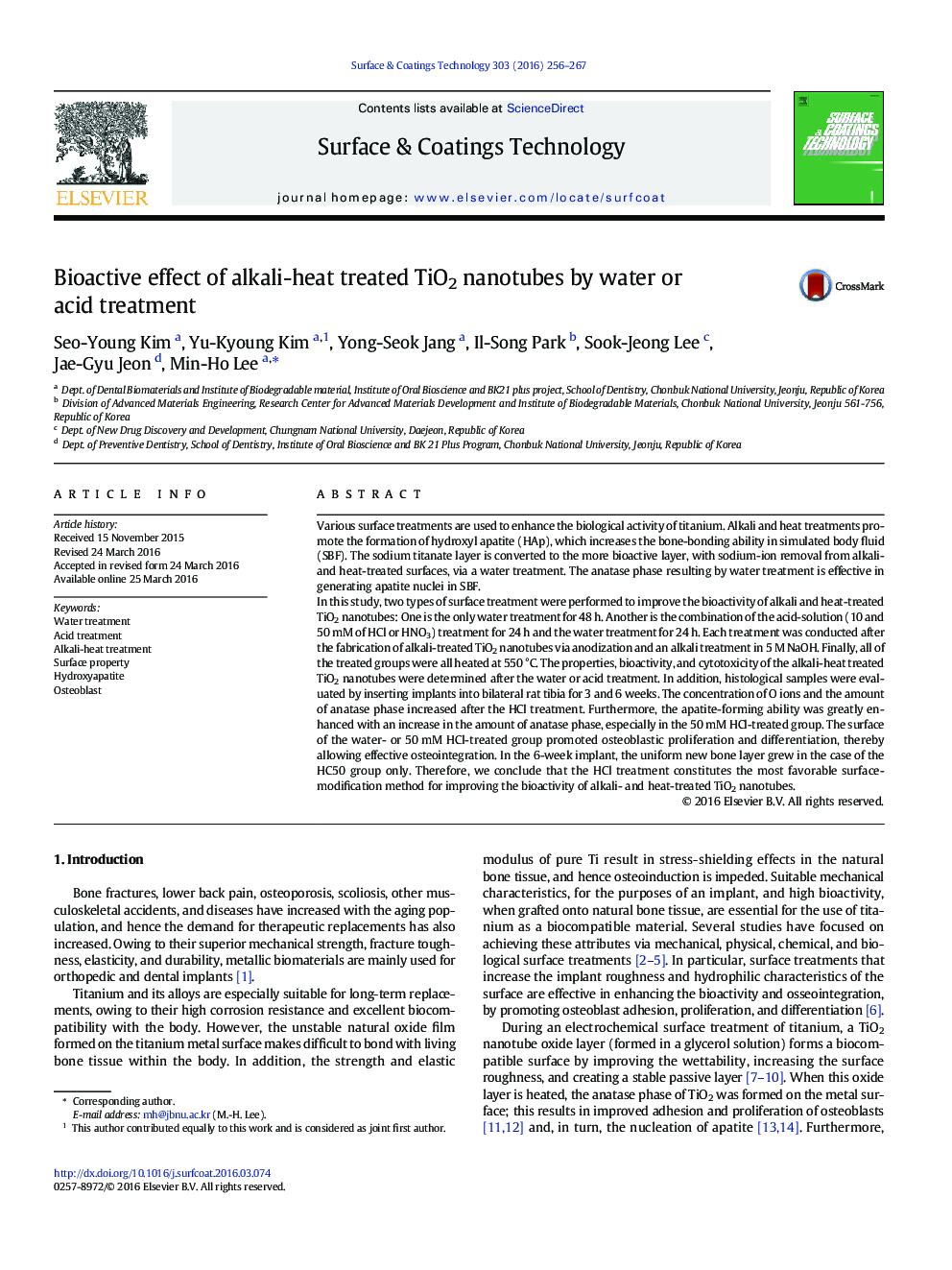| کد مقاله | کد نشریه | سال انتشار | مقاله انگلیسی | نسخه تمام متن |
|---|---|---|---|---|
| 1656279 | 1008236 | 2016 | 12 صفحه PDF | دانلود رایگان |

• Water or acid (HCl, HNO3) was applied to alkali and heat treated TiO2 nanotubes.
• The sodium ions on the surface were effectively removed by water or HCl treatment.
• The formation of apatite was enhanced by anatase formed after 50 mM HCl treatment.
• Apatite, formed on water or HCl treated surface in SBF, improved cell adhesion.
• 50 mM HCl-treated groups showed uniform bone formation in the surrounding area.
Various surface treatments are used to enhance the biological activity of titanium. Alkali and heat treatments promote the formation of hydroxyl apatite (HAp), which increases the bone-bonding ability in simulated body fluid (SBF). The sodium titanate layer is converted to the more bioactive layer, with sodium-ion removal from alkali- and heat-treated surfaces, via a water treatment. The anatase phase resulting by water treatment is effective in generating apatite nuclei in SBF.In this study, two types of surface treatment were performed to improve the bioactivity of alkali and heat-treated TiO2 nanotubes: One is the only water treatment for 48 h. Another is the combination of the acid-solution (10 and 50 mM of HCl or HNO3) treatment for 24 h and the water treatment for 24 h. Each treatment was conducted after the fabrication of alkali-treated TiO2 nanotubes via anodization and an alkali treatment in 5 M NaOH. Finally, all of the treated groups were all heated at 550 °C. The properties, bioactivity, and cytotoxicity of the alkali-heat treated TiO2 nanotubes were determined after the water or acid treatment. In addition, histological samples were evaluated by inserting implants into bilateral rat tibia for 3 and 6 weeks. The concentration of O ions and the amount of anatase phase increased after the HCl treatment. Furthermore, the apatite-forming ability was greatly enhanced with an increase in the amount of anatase phase, especially in the 50 mM HCl-treated group. The surface of the water- or 50 mM HCl-treated group promoted osteoblastic proliferation and differentiation, thereby allowing effective osteointegration. In the 6-week implant, the uniform new bone layer grew in the case of the HC50 group only. Therefore, we conclude that the HCl treatment constitutes the most favorable surface-modification method for improving the bioactivity of alkali- and heat-treated TiO2 nanotubes.
Journal: Surface and Coatings Technology - Volume 303, Part A, 15 October 2016, Pages 256–267